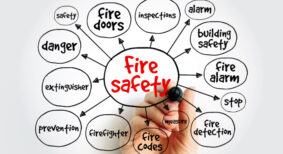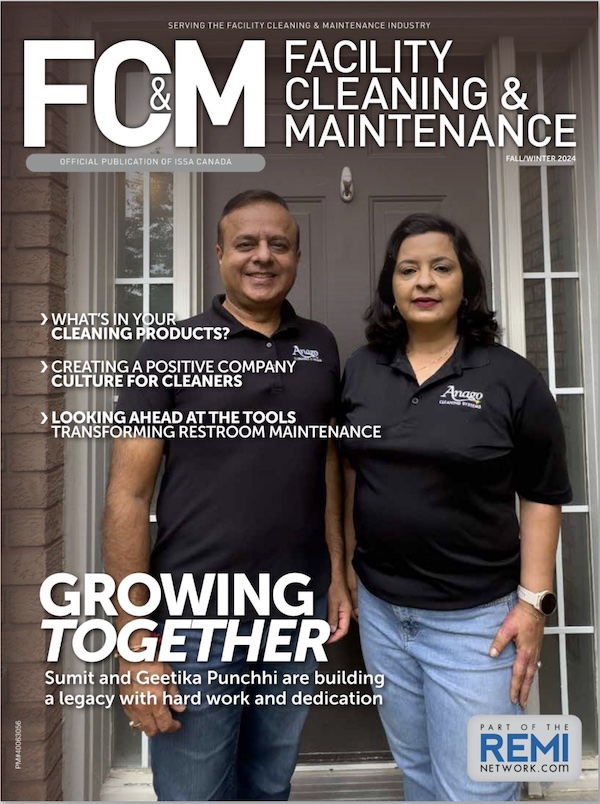The cleaning industry has always been a slow-moving sector, deeply rooted in traditional patterns. Many companies rely on methods that have been tried and tested for decades, claiming simply that “they’ve always operated that way.” This conservative view often holds back the adoption of new techniques or the optimization of processes. And yet, housekeeping is an area where the potential for improvement is immense.
Whether using intelligent technologies, real-time data analysis, or the redesign of organizational processes, there is an unparalleled opportunity to transform a service often perceived as simple into a genuine source of added value. By rethinking traditional practices and adopting a proactive approach, companies can not only improve the quality of their services, but also reduce costs, increase customer satisfaction, and position themselves as leaders in a constantly evolving market.
In a world where operational excellence and customer satisfaction are top priorities, it is essential for companies to rigorously measure, analyze, and improve their performance. In the janitorial sector, where profit margins are often very thin, this analysis becomes even more important. In many cases, cleaning contracts are still awarded to the lowest bidder, forcing companies in the sector to operate within these limited margins, restricting their ability to invest in innovation or optimization.
In this context, the use of KPIs and the integration of the Six Sigma methodology are powerful tools for overcoming these challenges. Properly mastered, they enable inefficiencies to be quickly highlighted, optimize processes, and ensure sustainable growth despite budgetary constraints, while delivering concrete and measurable results that meet client expectations.
What is a KPI and why is it Important in Housekeeping?
A SMART KPI is a Key Performance Indicator that meets the criteria of the SMART method. It must be Specific, Measurable, Achievable, Relevant, and Time-bound, to ensure that it accurately reflects the performance of a particular activity or process over a defined period. When properly designed, a SMART KPI enables business objectives to be monitored, and actions to be guided to maximize efficiency and effectiveness.
Case in point: the cleaning industry
Let’s take the following indicator: “Reduce the average cleaning time for a 65 sq. ft. office to less than 10 minutes per employee within 3 months.”
- Specific: The objective targets a precise task – cleaning a 65 sq. ft. office.
- Measurable: The time is quantified (less than 10 minutes per office).
- Achievable: With proper training or appropriate tools, this goal is realistic for the team.
- Realistic: The target is attainable based on current performance and potential improvements.
- Time-bound: The KPI is measured over a defined 3-month period.
With such indicators, it is possible to monitor performance rigorously and identify concrete areas for improvement, ultimately enhancing efficiency and service quality. In the cleaning industry, SMART KPIs can be applied to:
- Evaluate service quality: For example, monitoring occupant satisfaction by collecting real-time opinions via interactive screens or surveys.
- Optimize resources: Measuring team productivity by calculating floor space cleaned per hour or monitoring product consumption by building.
- Control costs: Comparing cleaning costs per surface area with industry benchmarks or those of similar sites.
- Reduce risks: Monitoring the number of incidents linked to cleaning operations, such as slippery floors, to implement preventive measures.
The use of well-defined KPIs aligned with organizational objectives can transform operational challenges into opportunities for growth and excellence.
To provide more perspective, here are some examples of KPIs specifically applied to housekeeping:
Inspection compliance rate: Percentage of cleaned areas meeting the standards outlined in the specifications.
Example: During a weekly inspection in a hospital, verify if all rooms, waiting areas, and restrooms meet hygiene standards. If 90 per cent of the areas are compliant, 10 per cent remain to be corrected.
Average task completion time: Average duration required to complete a specific task, such as cleaning a restroom or a meeting room.
Example: If cleaning a restroom typically takes 20 minutes but some teams exceed 30 minutes, it may indicate a lack of training, time theft, or inefficient tool usage.
Complaint rate: Number of complaints recorded per 100 interventions.
Example: A property management company receives complaints about uncollected waste in common areas. Tracking complaints could reveal these issues occur after staff or schedule changes.
Chemical usage: Amount of cleaning product used per floor space.
Example: Excessive consumption could signal waste or improper employee training.
Sustainability assessment: Percentage of ecological product use or water reduction per surface area cleaned.
Example: By adopting water-efficient cleaning solutions, a company can measure a 15 per cent reduction in annual water consumption.
The Six Sigma methodology
Six Sigma is a methodology focused on the continuous improvement of processes by identifying and eliminating variations and inefficiencies. This method is based on two main approaches:
- DMAIC (Define, Measure, Analyze, Improve, Control) is used to improve existing processes.
- DMADV (Define, Measure, Analyze, Design, Verify) is used to design new processes or services.
In the context of housekeeping, the DMAIC approach is particularly effective for addressing recurring issues and optimizing performance. Here’s how it can be appropriately applied:
Define: Identify project objectives based on client needs and organizational goals.
Example: Reduce toilet cleanliness complaints by 25 per cent over the next six months.
Measure: Collect data on current performance using KPIs.
Example: Install sensors to measure restroom cleaning frequencies and ensure they align with planned schedules.
Analyze: Determine the root causes of problems using tools like Pareto charts or control charts.
Example: Discover that 60 per cent of complaints originate from toilets cleaned between 4 PM and 6 PM, when staffing is reduced, resulting in less frequent cleaning.
Improve: Implement solutions to address identified issues.
Example: Adjust cleaning schedules to add an extra cleaning round between 4 PM and 6 PM or integrate automated cleaning tools to save time.
Control: Establish mechanisms to sustain improvements.
Example: Use dashboards to monitor cleaning frequencies in real time and correlate them with user feedback.
Case study: reducing complaints in a specific area
At an industrial location that operates 24/7, the manager noticed a high rate of complaints about restroom cleanliness in a specific area of the warehouse. The challenge was to pinpoint the exact cause and implement a sustainable solution to maintain an acceptable level of cleanliness by applying the methodology:
Define
Objective: Reduce complaints about restroom cleanliness in the problematic area by 80 per cent within two months.
Measure
Data collection: The team used a technological solution capable of monitoring cleaning frequencies and collecting real-time user feedback. The collected data revealed:
- Cleaning team schedules
- Gaps between cleaning rounds
- Volume and type of complaints submitted by employees in this area
Measurement results: The data showed a 14-hour gap between the last cleaning on Friday evenings and the first cleaning on Saturday mornings. This exceeded the frequency required to maintain acceptable cleanliness levels, particularly in a high-use environment.
Analyze
Root cause identification: Using analytical tools like a Pareto chart and identify correlations between complaints and cleaning schedules. The team determined that:
- Cleaning frequency was insufficient due to a schedule mismatch between weekdays and weekends.
- Heavy restroom use on Friday evenings exceeded the cleaning capacity before Saturday morning.
Analysis conclusion: The prolonged service gap was the main cause of complaints, precisely matching the periods flagged as being uncovered by cleaning rounds.
Improvement solutions:
- Schedule reorganization: An extra cleaning round was added on Saturday mornings to fill the gap between weekday and weekend schedules.
- Resource optimization: Adjustments were made to allocate additional staff during critical periods.
- Employee training: Training sessions were conducted to emphasize the importance of cleanliness in this critical area.
- Immediate impact: After implementation, complaints dropped instantly, achieving a 95 per cent reduction within the first month.
Control
Sustaining improvements:
- Real-time monitoring: The HBscan system continues to track cleaning frequencies and employee feedback.
- Performance dashboards: KPIs were established, such as average time between cleaning rounds and weekly complaint counts.
- Regular audits: Weekly inspections are conducted to ensure the new schedules and cleanliness levels are maintained.
This case study highlights how rigorous analysis and a structured methodology like Six Sigma can transform a recurring issue into an opportunity for sustainable improvement, even in a demanding sector like industrial housekeeping.
A strategy for success
The use of KPIs and the Six Sigma methodology in housekeeping is a strategic approach that enables organizations to achieve superior performance levels. By measuring specific key indicators, analyzing data, and implementing targeted improvements, companies can not only enhance their services but also optimize costs and strengthen customer loyalty.
Karl Bédard is the Senior Director at ValkarTech, a consulting firm dedicated to optimizing commercial cleaning contracts. As an experienced LEED Green Associates certified auditor, he conducts many building visits and evaluates customers’ various processes. His recommendations are always aimed at improving cleaning quality and productivity while minimizing costs.









